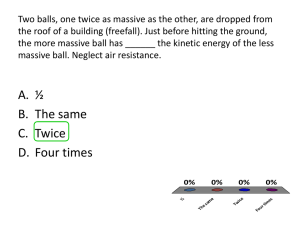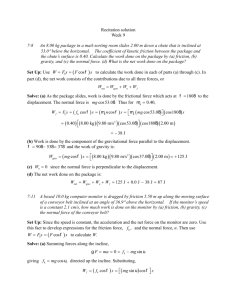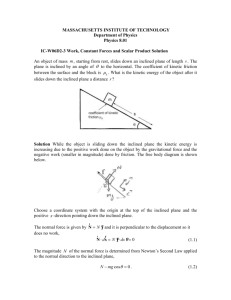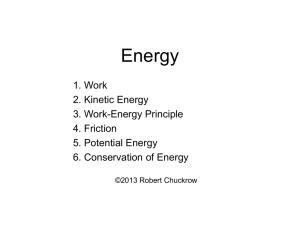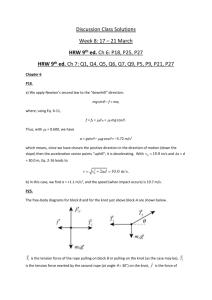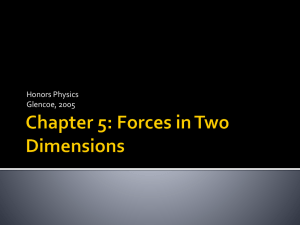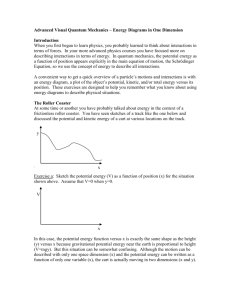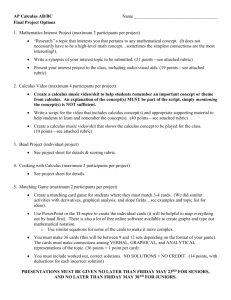AP Physics B
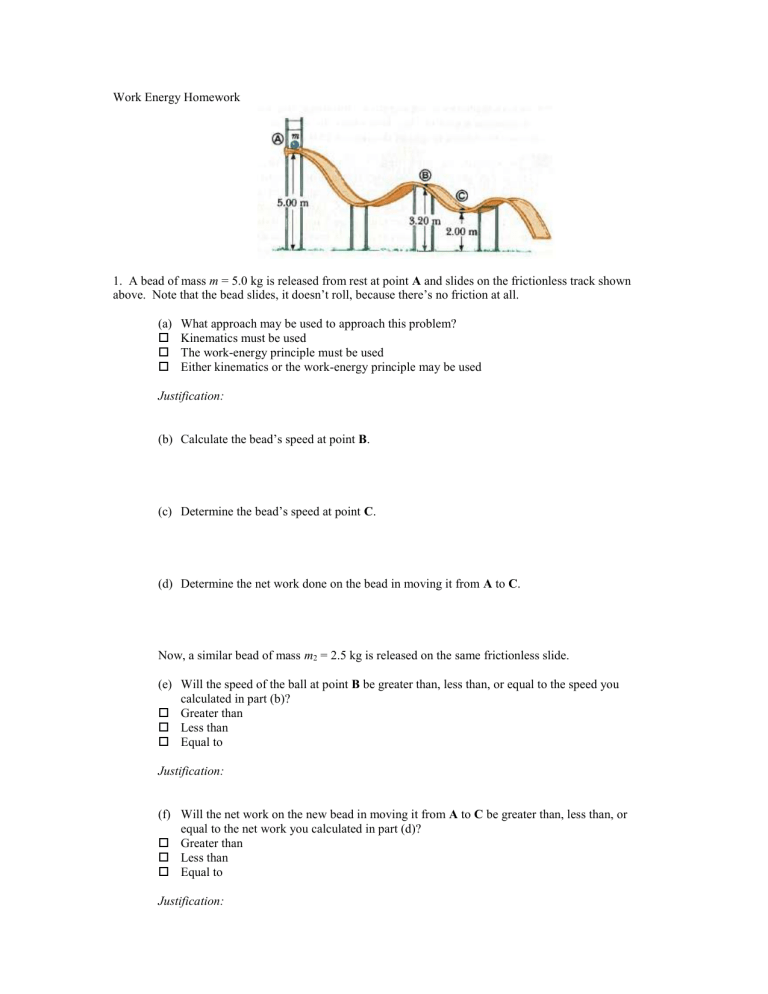
Work Energy Homework
1. A bead of mass m = 5.0 kg is released from rest at point A and slides on the frictionless track shown above. Note that the bead slides, it doesn’t roll, because there’s no friction at all.
(a) What approach may be used to approach this problem?
Kinematics must be used
The work-energy principle must be used
Either kinematics or the work-energy principle may be used
Justification:
(b) Calculate the bead’s speed at point B .
(c) Determine the bead’s speed at point C .
(d) Determine the net work done on the bead in moving it from A to C .
Now, a similar bead of mass m
2
= 2.5 kg is released on the same frictionless slide.
(e) Will the speed of the ball at point B be greater than, less than, or equal to the speed you calculated in part (b)?
Greater than
Less than
Equal to
Justification:
(f) Will the net work on the new bead in moving it from A to C be greater than, less than, or equal to the net work you calculated in part (d)?
Greater than
Less than
Equal to
Justification:
2. A body falls through the atmosphere (where air resistance is NOT negligible), gaining 20 J of kinetic energy. How much gravitational potential energy did it lose?
(A) 20 J
(B) more than 20 J
(C) less than 20 J
(D) Either more or less than 20 J, depending on the object’s mass and how far it fell.
3. The weight of an object on the moon is one-sixth its weight on earth. A body moving with a given speed on the moon has kinetic energy equal to __________ it would have if it were moving at the same speed on earth.
(E) the kinetic energy
(F) 1/36 the kinetic energy
(G) 1/6 the kinetic energy
(H) 6 times the kinetic energy
(I) 36 times the kinetic energy
Questions 4-6 A skier of mass m starts from rest at the top of a hill that is inclined at an angle Ɵ to the horizontal, as shown above. The hillside has a length D , and the coefficient of friction between snow and skis is µ
4. What is the initial potential energy of the skier?
(A)
(B)
(C) mgD cos
mgD sin
mgD cos mgD sin
(D)
5. What is the friction force on the skier while he is on the incline?
(A)
(B)
(C) mg
sin mg
mg
cos
(D)
(E)
mg sin mg cos
6. Define f as the friction force on the skier while he is on the incline. How much work is done on the skier by friction while the skier is still on the incline?
(A) -
(B) fD cos fD
sin
(C) fD fD cos
(D) -
(E) fD sin
7. A block of mass 2.5 kg is pushed 2.2 m along a frictionless horizontal table by a 16 N pushing force directed 25 o below the horizontal.
(a) Is the work done by the pushing force positive, negative, or zero?
Positive
Negative
Zero
Justification:
(b) Calculate the work done by the pushing force.
(c) Calculate the work done by the normal force exerted by the table.
(d) Calculate the work done by gravity.
(e) Assuming the block started from rest, calculate the speed of the block after 2.2 m.
8. Two identical arrows, one with twice the speed of the other, are fired into a bale of hay. Assume that the hay exerts the same friction force on each arrow. Use the work-energy theorem to determine how many times farther into the hay the faster arrow will penetrate.
